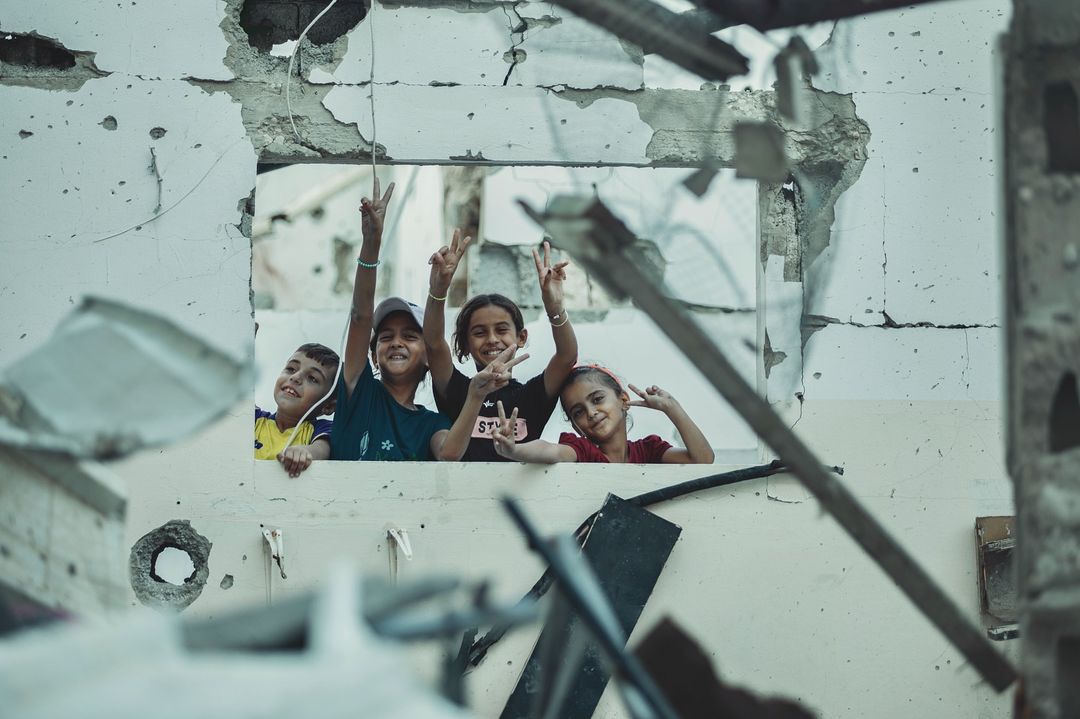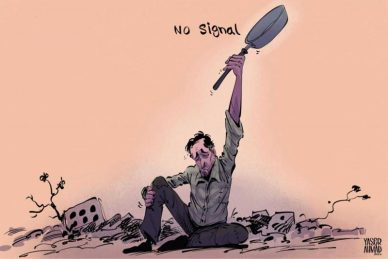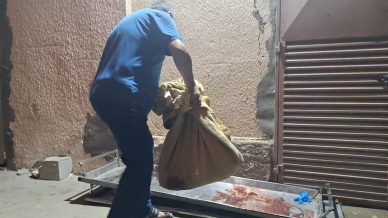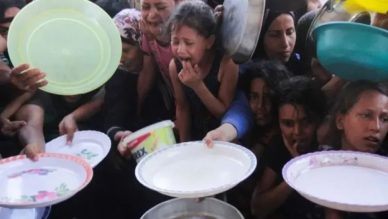GAZA, (PIC)
Israel has not ceased its extermination in all its oppressive forms against the innocent in the Gaza Strip for more than 440 days, indifferent and unconcerned.
It harvests Palestinians—old and young, women and men—cold-bloodedly. Israel commits genocide in every sense of the word, even resorting to hunger and deprivation as deadly weapons against the innocents, hoping to find someone who will raise the white flag in despair.
The dark mission
Israel attempts to whitewash its genocide before the world, yet it disregards all international and humanitarian agreements regarding war situations. It stands isolated in international forums, where the United Nations has unanimously called for an immediate halt to the genocide. However, Israel clings to unwavering American support to continue its dark mission of destroying stone, trees, and people. Writer and researcher Hamid Ashour confirmed that this operation is not a coincidence but results from previous decisions, showing their impact on the ground in both northern and southern Gaza.
He added, “Hundreds of trucks are piled up along the crossings, with only dozens allowed in for months, a number that barely quenches the thirst of a city that the occupation knows well requires at least 400 trucks daily, according to United Nations estimates.”
The bitter harvest
In addition to the continuous policy of killing and extermination, which has claimed more than 45,000 martyrs and left over 10,000 missing and more than 110,000 injured according to health reports from Gaza, Israel has found no signs of defeat in Gaza. Thus, it has pursued a deliberate policy of starvation, which has severely exacerbated the humanitarian situation. People find nothing to eat, and if they do, it is blood-stained and exorbitantly priced.
Observing the humanitarian situation in Gaza reveals signs of crisis in everything: no electricity, no water, no potable water, no transportation, no food, and no means of living. In short, life in Gaza is akin to death, yet the people remain and resist breaking.
The obliteration of consciousness
Journalist and writer Abdul Rahman Younis tells our correspondent that what is happening in the Gaza Strip resembles myths—a whole people being exterminated before the world’s eyes, and the level of interaction remains disproportionate to the magnitude of the crime. He asserts that Israel, by continuing its killing and extermination, along with starvation and the oppression of people, is trying to obliterate their consciousness and push them to lose faith in resistance and its programs, hoping they will turn against the resistance and demand its surrender. He emphasizes that this is not happening despite the horror faced by the residents.
The deliberate policy of starvation has exacerbated the humanitarian situation in the Gaza Strip, especially after the complete destruction of the agricultural sector. The markets in Gaza are empty, and you can hardly find anything to eat. If you take a tour of the exhausted city’s markets, you will see no vegetables or fruits, and no type of meat has been available for many months. Most of the residents are surviving on canned goods—just beans, peas, and fava beans. The situation has even affected children’s bread, as flour has run out in households, with the price of a single bag of flour nearing $250.
The Food and Agriculture Organization of the United Nations (FAO) said that the ongoing Israeli extermination war on Gaza has destroyed more than two-thirds of the agricultural land in the Strip, “increasing the risk of famine among the population.” The FAO’s report, prepared in collaboration with the United Nations Satellite Center (UNOSAT) and released a couple of days ago, indicated that as of September 1, 67.6% of agricultural land (more than 10,000 hectares) had been damaged, with the percentage being 57.3% in May and 42.6% in February.
The report noted that 71.2% of orchards and fruit trees, 67.1% of field crops (especially in Khan Yunis), and 58.5% of garden crops have been affected, according to satellite images. The FAO report also indicated that over half of the agricultural water wells (1,188) and 577 hectares of agricultural greenhouses were severely damaged, showing signs of heavy vehicles or bombing, or were leveled to the ground.
The report recorded the death of about 95% of livestock, with 43% of sheep (less than 25,000 heads) and 37% of goats (3,000 heads) surviving, while most fishing boats in the port of Gaza City suffered severe damage. Beth Beaudoin, the FAO’s Deputy Director-General, warned that “the extent of the damage has reached unprecedented levels, raising serious questions about current and future production capacities, as food aid alone cannot meet the daily needs of Gaza’s residents.”
Hamid Ashour emphasizes that given the immense needs of the Strip and Israeli restrictions, and the critical state that Gaza has reached, the Strip requires more than just emergency aid. He asserted that the world must speak out against this heinous injustice. If international and global organizations cannot stop the war, they should at least fulfill their responsibilities and end this state of global inertia. It is unreasonable for people to die from bombardment and starvation simultaneously. If the aim of starving Gazans is to break their will and use it as leverage in negotiations, this will not be effective, and Israel knows this well.
Despite the continuous bombardment and the suffocating siege that has affected every aspect of life, the Gaza Strip remains a testament to a people’s resilience facing extermination with an unbreakable hope. Amid destruction and pain, daily stories of heroism emerge from the womb of suffering, and life blooms from beneath the rubble. Resilience is not merely an act of survival; it is a message to the world that the will to live is stronger than any force seeking to obliterate it, and Gaza will remain a symbol of patience and dignity no matter how great the trials.















